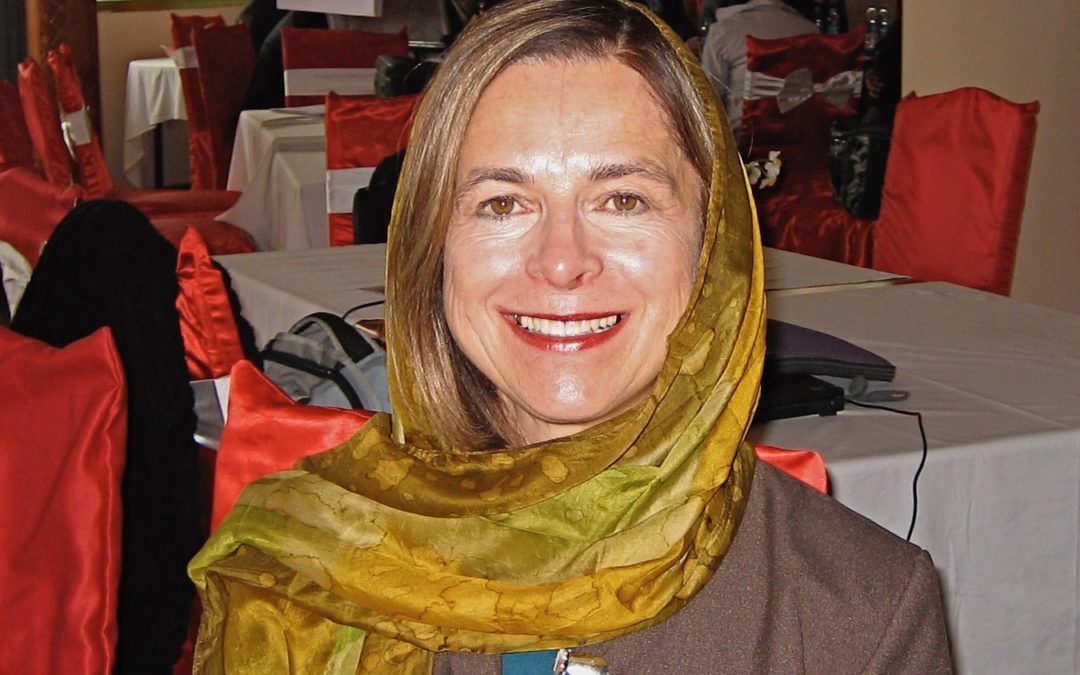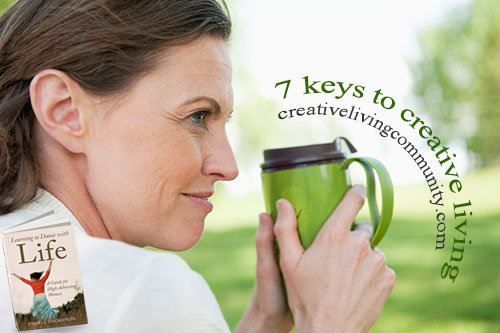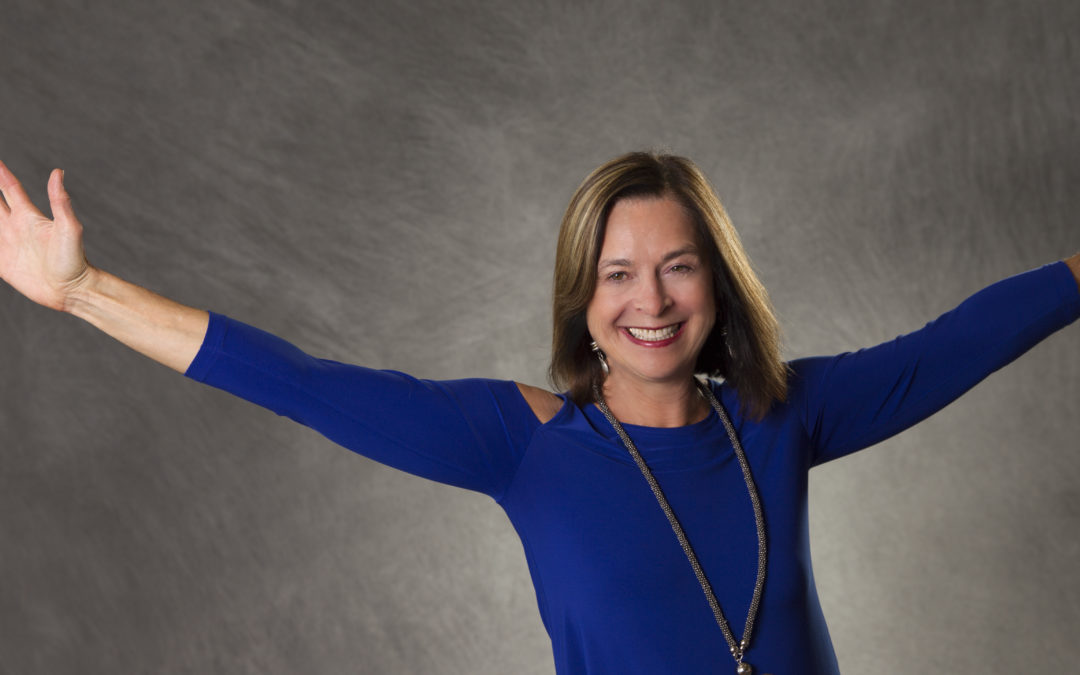
by pam | Apr 13, 2021 | Change, Changemaker, Feminine Leadership, Leadership, Women in Business
In a recent post I shared how if you want to “be the change” you want to see in the world, it is essential to do some inner exploration. [1] I call it “exploring your inner landscape” – those beliefs, stories, and emotions that unconsciously run your life.
Many of us from a young age know “in our bones” we are here to make a significant difference in the world. That said, a number of us have no clue as to what that difference is.
To get clear on the difference you are here to make, it is important to uncover your unique talents and identify your passions.
I particularly like the definition Janet and Chris Attwood give to the word “passion” in their book The Passion Test. They say that “your passions are the loves of your life … things that are most deeply important to you … things that, when you’re doing them or talking about them, light you up.” They also note that “passion and love are inextricably intertwined because both arise from the heart. When you follow your passion, you will love your life.”
When you discover your passion and live your life aligned with it, you feel truly joyful, fulfilled, and at peace. It lights your fire and fuels your enthusiasm for life. You feel that you are indeed doing something that makes a positive difference in the world.
We all have unique gifts and talents to share with the world. Here’s a short exercise to help you clarify yours.
1. Draw a chart with two columns. In the first column, write down all the things that you are good at, or things that come easily and naturally to you. They could be things such as athletics, mathematics, writing, whatever you feel fits.
2. In the second column, write down the things you enjoy doing. They could include being in nature, teaching others, using your body, playing piano….If you feel challenged by this, think back to what you enjoyed doing as a child.
3. Now look at both lists and circle the items that are similar or identical. Then review the circled items. Go inside and get in touch with the feeling each one evokes inside you. Does it excite you? Does it have little or no effect on you? Rate each item on a scale from 1 to 10 according to the level of passion you have around it (1 being “no interest at all” and 10 being “red hot”).
I encourage you to do this exercise. Sharing your findings with others has additional impact as you may gain insights and support from them.
I’d like to emphasize that just being good at something doesn’t mean it is your passion or will fulfill you if you work in that area. What you’re good at can provide clues to our passions but are not necessarily connected with them. A passion is often a blend of what we love and what we’re good at. As well, a passion may change during our lifetime. [2]
So, what’s next? After you discover your passion(s) it’s helpful to identify either a new area of work you wish to pursue or a volunteer activity that will “light you up”. Getting support from a coach or mentor can be helpful at this point.
An organization that I’m passionate about that is alignment with my passions of loving travel and working with diverse people and cultures, teaching, coaching, and mentoring, designing and co-creating workshops, projects and programs that have social impact, and my own love of learning, as well as my values of: contribution and connection is Female Wave of Change – https://femalewaveofchange.com. I am honored to be Ambassador for Canada of Female Wave of Change, a global movement that unites women (and some men) changing the world into a better place for future generations through authentic feminine leadership. As part of my commitment to growing the community in Canada I recently incorporated the national non-profit Female Wave of Change Canada – https://fwoccanada.com.
If you value being part of a community of heart-centered women from diverse backgrounds and cultures, are passionate about making a difference in one or several of the areas of: environment, education, economy, health, and humanity, I encourage you to check us out. Questions? Email pamela@femalewaveofchange.com.
[1] https://pamela-thompson.com/how-to-be-the-change-part-1/
[2] This section and exercise is largely excerpted from my book Learning to Dance with Life: A Guide for High Achieving Women, chapter 8, pp. 107-109.

by pam | Nov 22, 2020 | Change, Changemaker, Creative Living, Feminine Leadership, Leadership, Women in Business
The way many of us in the world are currently living and working is not sustainable. The way our organizations and societies are structured, how they are led, and how success is defined are being questioned. Our day-to-day actions and the beliefs and values on which they are based, are resulting in many of us experiencing chronic stress leading to negative impacts on our bodies, minds, relationships, productivity, and our bottom lines.
Our reliance on fossil fuels and a world focusing on consumption and the belief that earth’s resources are infinite are now being challenged. We now have data to show how nature can heal itself if we let her. Many of us are finally embracing the need to take action to preserve and save our beautiful planet and the fauna and the flora within it.
COVID-19 has shone the light on a number of the inequalities such as systemic racism, gender-based violence … and we are now acknowledging that we need to take action NOW toward creating a world that works for everyone.
What can you do? Where can you start?
We know that change starts from the inside-out and begins with each and every one of us.
The 7 keys to what I call Creative Living and the strategies and practices associated with them are an excellent starting point to begin to “be the change”.
I introduced the concept of Creative Living in my book “Learning to Dance with Life: A Guide for High Achieving Women”. Creative Living is defined as the “conscious cultivation of improved health, happiness, fulfillment and inner peace.”
There are 7 keys to Creative Living with proven practices and powerful strategies based on my own journey and work with clients from diverse cultures and backgrounds that are supported by evidence from neuroscience, the health promoting and healing benefits of the arts, organizational development and eastern psychology.
The 7 keys to Creative Living are: 1) Listen to and Trust in Your Body’s Wisdom; 2) Tap into and Express Your Creative Side; 3) Consciously Create Right and Left Brain/Body Balance; 4) Live in Alignment with Your Core Values; 5) Believe that You are Here to Make a Difference; 6) Learn from and Embrace Life Transitions; and 7) Find Inner Peace and Build Peace in Your Family, Community, Workplace … the World.
If you would like to learn more you can access “Learning to Dance with Life” on Amazon. Here’s a link: Learning to Dance with Life: A Guide for High Achieving Women
In my next few posts, I will be sharing how each of the 7 keys can support you to “be the change” you want to see in the world. Stay tuned!
I’d love to hear from you. Feel free to share your comments below; e.g. What strategy or strategies do you believe are important for creating a world that works for everyone?

by pam | Mar 10, 2020 | Change, Changemaker, Leadership, Women in Business
There’s been a lot of talk in
recent years about women “being the change” we want to see in the world. Yet how do you “be the change” in your
day-to-day life? Here are a few thoughts that I hope will stimulate some of
your own.
How can we be the change we want to see in our homes?
- By choosing to share household responsibilities with our partners such as cooking, cleaning, yard work … and modelling these choices for our children
- Teaching our boys as well as our girls to cook, clean, do the dishes …
- Teaching our girls as well as our boys to mow lawns, shovel snow …
- Becoming financially literate. By this I mean “ … the possession of the set of skills and knowledge that allows an individual to make informed and effective decisions with all of their financial resources” (Source – Wikipedia; ) and ” … the ability to understand and effectively apply various financial skills, including personal financial management, budgeting, and investing. Financial literacy helps individuals become self-sufficient so that they can achieve financial stability.” (Source – https://www.investopedia.com/terms/f/financial-literacy.asp)
- Teaching our children financial literacy.
How can we be the change we want to see in our
communities?
- By identifying an issue we are passionate about and initiating
a project/program to make a difference in this issue (e.g. nutritious school meal
programs; animal welfare; homelessness)
- By identifying an existing group or organization that
is championing an issue we feel passionate about and contributing our relevant
knowledge, skills and/or our financial resources to that organization or group.
How can we be the change we want to see in our work?
- If we see issues we feel strongly about that are not
being handled effectively in our workplaces (e.g. gender inequality, need for
diversity training … ), we may observe and collect data to support our case and
identify others within the setting to support us to make a case to management.
- If we own our own businesses we may choose to donate
our time and/or money to an organization whose work we value (such as a group
that is pro zero waste, sustainability, women’s rights … )
- If we own our own businesses we may choose to develop
and offer workshops and keynotes to public and private sector organizations on
topics of interest and expertise such as: diversity and inclusion training,
change management, feminine leadership.
Now, over to you. What suggestions do you have for how you and
others can “be the change” you want to see in your households, communities,
workplaces …?
I welcome your comments
below.

by PT-clc | Jan 12, 2020 | Changemaker, Embracing Change, LeadinginUncertainTimes, Women in Business
A new year holds promise and also brings with it
uncertainty.
How do you respond to
uncertainty as a leader and changemaker? Do you typically greet it with
open arms, or hide from it pretending you have all the answers, as you feel
uncomfortable not knowing the outcomes.
What happens when you
approach uncertainty believing you have all the answers? You may set goals
and push through to accomplish them, focusing mainly on the metrics, without
taking into consideration your people and an intervention’s impact on your
organization and its culture. You may miss out on opportunities and creative
solutions that can arise from uncertain situations.
To illustrate what
happens when we greet uncertainty with open arms …
One of the things I’ve enjoyed about working in international health and development is the uncertainty, and with that, the opportunities for new and creative solutions, that present themselves. For example, when I was working in Afghanistan about 10 years ago as a Senior Technical Advisor in Planning and Performance Measurement, I met with the Minister the second day of my 9-month contract. At that time, she shared that although their original plan was to hire a policy and a planning advisor, since I had some experience with policy that she wanted me, within the first month, to give her a report of my impressions of her Ministry’s policy development and planning processes and what recommendations I would offer to improve them. This, on top of the tight timeframe I had to work with her folks to develop the Ministry’s first strategic plan and build their capacity in planning!
I went back to my office and asked the Afghan physician and policy advisor who sat beside me, if he had an org chart of the Ministry in English. He said “no” but he had one in local language. He printed one out for me and I asked him to tell me which departments were in the 15 boxes below the Minister and Deputies and the names of each Director while at the same time writing them all in English on the chart. Then I asked if he would take me to each one of their offices and introduce me to them (a few at a time).
At that time, I shared with each person that I would appreciate the opportunity to meet with them for 1 to 1.5 hours over the next day or so, and asked if there was a time that would work for them. I then followed up with the interview questions by email, which I quickly formulated. Within a month I had interviewed the top 15 department heads, rolled up in a report for the Minister what THEY perceived where the key strengths and weaknesses in their policy development and planning processes, their suggestions for improvement and added my own recommendations. In addition to learning a lot about how policy development, implementation and planning was done at the Ministry, I also had met one-on-one with 15 influential leaders in the organization, which served me well in the coming months.
If I had planned the above scenario in advance, it couldn’t
have worked out better!
What ingredients are
required of leaders and changemakers so we can more effectively deal with
uncertainty and embrace it?
I believe the following are important in this complex and
rapidly changing world we live and work in:
- Authenticity
– Acknowledging that you do not have all the answers or aren’t sure what to do.
- Flexibility
– Creating opportunities to reflect, and the ability to change direction during
a process that has an uncertain outcome (e.g. culture change process) .
- Emotional
Intelligence – Recognizing your own strengths and weaknesses, surrounding
yourself with a team that has complementary skills and personality traits to
yours, inviting their thoughts and suggestions, and truly listening to what
they have to say.
- Process
Understanding and Inclusive Orientation – Valuing a facilitated process
that encourages different voices to be heard and supports diversity.
- Openness
to new ideas – Inviting creative ideas and listening to what people are saying;
(e.g. providing opportunities to encourage people to tap into and express their
creative sides).
- Trust
that everything will work out. Chaos theory has demonstrated that order
comes out chaos.
Uncertainty conjures up fear in many of us; however if we greet it with open arms and include the ingredients above, incredible opportunities and solutions are possible!
How do you embrace uncertainty? I invite your thoughts below.

by PT-clc | Nov 12, 2019 | Changemaker, Dealing with Stress, Healthy Organizations, High Achieving Women, Leadership, Stress Management, Women in Business
Do you feel like there
are never enough hours in the day? Do you crave guilt-free time with family and
friends without that “to-do” list nagging you in the back of your brain? Do you
long for some time for you, to just “be”?
I understand. I’ve been where you are. In December 2012, I
almost burnt out. I had been working on a one-year contract with a non-profit
that promotes women’s and children’s rights around the world. When the
opportunity came my way, I was excited as I felt so aligned with their mission
and values.
As I flew to several African countries for project start-up,
I felt energized and passionate; excited to meet the teams on the ground and
learn about their needs and how I might be of support. 6 months in, I started
to feel SOoo tired and that there was so much to do and so little time. Do you relate?
I was initially hired to be a Senior Health Advisor on 5
projects in Asia and Africa to reduce infant and maternal mortality. That
morphed to 7 projects in 7 countries. I was initially to be a member of a
multi-stakeholder working group of four non-profits that had received a large
amount of donor funding to hire a research institute to evaluate the combined
impact of all of our projects in Asia and Africa. Within a month of starting
the position, I was informed that I was the Chair of that working group. The
Chairperson position became almost a full-time job on its own.
I was working night and day feeling so committed to what I
was doing and wanting to do the best job I could. Near the end of the contract
the non-profit invited me to stay on for another 6 months in a reduced role, 2
days a week chairing the multi-stakeholder working group. I was close to
signing the new contract and asked to sleep on the decision. I awoke the next
morning feeling like a lemon that had been squeezed dry. In that moment I knew
that I finally had to listen to my body and take a break. So I turned down the
opportunity. The VP and Director I’d been working with were shocked and asked
me why. I said “because I want to create more balance in my life”. At the time
I had no idea what that meant or what my life would look like but, but I
started 2013 with no work on my plate, committed to reconnecting with family
and friends and spending a lot of time in nature. I studied mindfulness,
started to meditate daily and continued with regular yoga practice. I slept 10,
12, 13 hours a night and after 4 months was still tired. So I went to a naturopath
who put me on some homeopathic meds and within a month or so I started to get
my energy back and feel more like myself.
About 5 months in, the 7 keys to what I call Creative Living; 7 keys to consciously
cultivating improved health, happiness, fulfillment and inner peace in your
life, came to me. I then began writing my first book “Learning
to Dance with Life: A Guide for High Achieving Women” which made #1 on
Amazon on launch day. It is a guide for women, as well as men, who constantly
“give” and “do” out of balance with “receiving” and “being”.
Burnout and adrenal fatigue are reaching epidemic
proportions. In May of 2019, the World Health Organization (WHO) revised its
classification of burnout from a medical
condition to an occupational
phenomenon. Their definition:
“Burn-out is a syndrome
conceptualized as resulting from chronic workplace stress that has not been
successfully managed. It is characterized by three dimensions:
- feelings of energy depletion or exhaustion;
- increased mental distance from one’s job, or feelings of negativism or cynicism related to one’s job; and
- reduced professional efficacy. ” [1]
The importance of this change in the WHO classification is
that it acknowledges that organizations and their leaders have a role to play
in reducing workplace stress; rather than burnout being perceived as a personal
medical issue, a sign of weakness and something to be hidden and ashamed of.
To learn more about burnout, its symptoms and causes see: https://pamela-thompson.com/how-to-know-if-youre-burning-out-what-to-do-about-it/
Proven Strategies and Powerful Practices
How can we as leaders
and changemakers turn this epidemic around? It starts with us, and our own lives. Here are
a few strategies I’ve personally found effective and have shared with coaching
and consulting clients around the world.
- Integrate mindfulness practices into your life daily. Mindfulness practices help us get out of our heads and into our bodies. They originate from Buddhism. Body scanning is a good place to start. Each morning on awakening scan your body from the top of your head to the tips of your toes. Notice any areas of tension or discomfort. Breathe into those areas and release them. Imagine them flowing out of your body. Mindfulness walking meditations are another practice. I recommend initially doing these 3 times a week for 15 to 20 minutes a day; for example, at a lunch break or immediately after work. Ideally do this outdoors in a park or in nature if possible. Focus on all of your senses. Hear the crunch of leaves underfoot, smell the salty sea air, view the beautiful vistas surrounding you, feel the wind on her cheeks. When thoughts come in to your head, imagine they are clouds. Let them drift by and resume focusing on all of your senses. Notice what you notice during the walking meditations and after.
- Listen to
and Trust in Your Body’s Wisdom. This is one of the 7 keys in my book. What
I know to be true is that our bodies always know the truth. Many of us were
raised in cultures that value and focus on our rational, logical left brain and
staying in our heads. Mindfulness practices help us get back into our bodies,
and learn to listen to and trust them. Try something as simple as when you feel
tired, go to sleep rather than pushing through that last task before heading to
bed. When a decision doesn’t feel right, try going with your gut rather than
rationalizing a decision. For more tools that assist you to learn to make
decisions using your body’s wisdom check out chapter 4 in Learning to Dance with Life.
- Tap into
and Express Your Creative Side. Is
there something you enjoy doing that when you do it you become immersed in it
and lose track of time? Could be film editing, painting, writing,
gardening, cooking … . Chances are when you have this experience, it is one of
your passions, and when you tune into it you are tapping into your creative
right brain. Usually you feel energized and positive while engaging in a
passion. When you are filled with childlike wonder you also get out of your
head and into your body. Regularly taking time to do something you enjoy that
is creative helps reduce the stress in your body and takes your mind off work.
- When you feel stressed Deep breathe in through your nose and out through your mouth consciously
making a noise on the out breath. Do this about three times and notice what
you notice. This practice stimulates the release of the hormone oxytocin that
relaxes us and makes us feel good.
- Set firm
boundaries; i.e. learn to say “no”. In order to do this it is helpful to
clarify your core values (For more info
on values see https://pamela-thompson.com/do-you-live-in-alignment-with-your-core-values/)
– and ask yourself: Is this activity or
this organization in alignment with my top 5 core values? Another
question to ask is: Will this activity
bring me joy? Do I have time to add this activity to my plate?
- Celebrate
successes – big and small. Rather than checking a completed project or key
activity off your list and quickly moving onto the next, take time to celebrate
it with yourself and with other special people in your life. This can be as
simple as taking a moment to go inside yourself and acknowledging the work
you’ve done and feeling good about what you’ve accomplished. It could be
treating yourself to a massage, bubble bath or pedicure or going out for a
special dinner with a friend or partner.
I invite you to commit to integrating two or three of the above strategies into your life starting tomorrow. If you would like to learn more about how to stay happy, healthy and grounded while being successful in life and business check out my book Learning to Dance with Life – www.amazon.com/dp/B0145ZGDO2 – which is backed up by evidence from neuroscience, eastern psychology and the health-promoting and healing benefits of the arts.
I welcome your
experiences and comments below. What strategies have you found successful in
reducing work-related stress?
[1] https://www.who.int/mental_health/evidence/burn-out/en/

by PT-clc | Aug 8, 2019 | Change, Changemaker, Leadership, Organizational Change
Did you know that approximately 70% of organizational
change initiatives fail? Why is that?
According to my own work on
five continents and a cursory review of the literature, the main reason
organizational change initiatives fail is because they do not adequately address the people side of change.
What do I mean by the people side of
change?
People are at the heart of
our organizations. They include everyone from the CEO, Senior Management Team,
Middle Managers, Team Leaders and Employees. They also include key stakeholders.
How do you address the people side of
change?
CEO and Senior Management Team –The key ingredient here is for CEOs and their Senior
Management teams to be clear on why they
are initiating a change – be it a culture change, reorganization,
leadership change, new strategic plan … AND communicate that “why” clearly down through all layers of an
organization. That said it is not enough
to communicate the change, it is important for others in the organization
to take ownership of the change (more
about that later).
Another important aspect is
that a CEO and their Senior Management Team understand change and how they typically respond to it. Some key
questions to think about are: On a scale from 1 to 10, how do you typically
respond to change? One being “It scares
me to death” and 10 being “I thrive
on it”. My experience has been that most leaders rate themselves from 8 to
10. They tend to thrive on change. However, there may be others on their teams
who are 4s or 5s. If so, it is important to be aware of that, open up the
conversation, and discuss how those folks may be supported throughout the
change process.
When a CEO is open about
change, acknowledges that many of us fear change, provides opportunities for
their people to learn how to embrace change versus resist it and models
this behavior for others, it improves the chances of success of an
organizational change initiative.
How do you embrace versus resist change?
Based on more than 25 years of
consulting and coaching with individuals and organizations on 5 continents, I’ve designed a 5-step process called “The Art of
Change Framework” to support leaders and their organizations to embrace change.
It is underpinned by the belief that “embracing
change is a creative process that opens us up to new possibilities”. It is
also supported by evidence from neuroscience, eastern psychology and
organizational development.
This process is best implemented on the “front end” of an organizational change
initiative and lays the foundation for that initiative. It works best in an
experiential workshop(s) format where leaders and their teams have the
opportunity to learn about change together, explore how they respond to change
and why, and receive tools to support them as they move into a change process.
The Value Add? When people learn about change and how they respond to
it, that not only supports their engagement, motivation, productivity and
positivity in the workplace, it also improves their personal lives.
I’ve included an excerpt from
“The Art of Change Framework: A Guide to Personal and Organizational Change”
below to illustrate the differential impacts between embracing versus resisting
change (full document available at https://pamela-thompson.com/).
What happens in Ourselves, Our Relationships and Our Workplaces when We
Resist Change versus Embrace it?
OURSELVES
|
Resist
|
Embrace
|
| We view change as a threat | We view change as an
opportunity to learn and grow and as a creative process that opens us up to new
opportunities |
We feel:
Angry
Depleted
Low in energy
Victimized
The increased stress over time
negatively impacts our health; can
lead to chronic illness and
negatively affect our career paths | We feel:
Open
Excited
Energized
Nonjudgmental
Over time we are more relaxed,
more flexible and open to creative
ideas. Our health may be positively impacted as we feel supported by
those around us and that we are
contributing to something greater than ourselves; may positively
impact our career paths |
In our interactions with others we:
Are not totally present
Are judgmental
May be argumentative | In our interactions with others we:
Are present
Are mindful
Seek to understand and support
others |
OUR RELATIONSHIPS
|
Resist
|
Embrace
|
Strained
Reactive
Judgmental
Characterized by
increased conflict
We feel alone,
victimized and that others don’t
understand us | Open
Responsive
Curious
Characterized by increased understanding, creativity and compassion
We feel part of something and
supported |
OUR WORKPLACES
Increased conflict –
“us” versus “them”
mentality
Reduced morale
Reduced engagement
Little innovation
Increased illness and absenteeism
Negative impact on the bottom line |
Increased cooperation,
collaboration and synergy
Increased morale
Increased engagement
Creativity and Innovation
Reduced absenteeism
Positive impact on the bottom line |
As leaders of teams,
organizations or community groups, it is essential that you understand change
and how you respond to it and also understand your team members and how they
typically respond to change. By engaging in facilitated experiential workshops
on the Art of Change, the
understanding among team members will increase and resistance toward a change
process, be it a reorganization, new leadership, new project or new strategic
plan, will decrease.
Providing Opportunities for people from various layers of the organization to input into the change process such as answering the question: How will the change affect me? And How can we as a team best support and positively contribute to the change initiative? AND the leadership taking those responses into consideration, is important. This includes input from key stakeholders which may be obtained through telephone interviews, focus groups, facilitated workshops … . Providing opportunities for people to input into the change process not only may provide interesting suggestions and perspectives, it will also build ownership for the change. People by nature, want to be respected, valued and feel like they belong; and enabling them to input into a change process supports these basic needs.
My experience has been that
when we provide the opportunity for people at various levels to input into a
change process, they often contribute ideas and suggestions that senior
management is not aware of/cannot see from their organizational vantage point.
In a recent episode of “The Art of Change” radio talk show, my guest, Shelley Gilberg, partner in PricewaterhouseCoopers, and experienced organizational change expert, noted that one reason many change initiatives fail is because “we cut off support too early to sustain change initiatives” – For more details check out: https://www.spreaker.com/user/bbm_global_network/the-art-of-change-show-9. Providing people at various layers of the organization the opportunity to receive training and support and instituting “check points” along the way for people to identify how they feel and why is important. This is also supported by Brene Brown’s interviews with a large sample of leaders from both public and private sector organizations.
In Summary
There is strong evidence that
the reason why many organizational change initiatives fail is because they do
not adequately address the people side of change. When we provide opportunities
for people from various layers of an organization, as well as key stakeholders
to input into a change process, when the CEO and Senior Management Team are
clear on why they are initiating a new change and communicate that effectively
throughout an organization and model positive change behaviors, and when leaders
and their teams from various levels in an organization are provided the
opportunity in experiential workshops to learn about change and explore how
they respond to it, the chances of success of an organizational change
initiative increases.
Learning and implementing the
5-step Art of Change Framework helps
you as a leader understand how you respond to change and is a tool to support
you and your team(s) to embrace it. In these challenging and uncertain times,
now more than ever, we need proven processes to support individuals and leaders
in communities, governments and organizations to create successful change
initiatives and through those efforts make a positive difference in the world.





